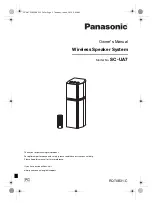
Page - 17
Accessory Wiring Harness - DLS Port
(Red 4-Pin Connector)
Plug-In DLS Power Doorlock Interface Port:
The Red 4 pin port on the
system's control module produces a negative pulse output for locking the doors, a
constant 12 volt pin for the optional relay coils only, a first negative pulse output
for driver door unlock, and a second negative pulse output for unlocking all other
doors.
The vast majority of power doorlocks are found as three system types: 3 wire
negative pulse, 3 wire positive pulse and 5 wire reversal, rest at ground. Other power
doorlock systems which may be encountered are the vacuum pump types found in
older Mercedes vehicles and the single wire, dual-voltage which has appeared in
some late model vehicles. The best way to identify a doorlock system is to examine
the doorlock switch's wiring.
3 Wire Negative Pulse Systems
are typically indicated by the presence of
three wires at the switch. Of these, one will show constant ground, regardless of
whether the switch is being operated or not (at rest); one will show ground when the
switch is pushed to the "lock" position, and the other wire will show ground when
the switch is pushed to the "unlock" position. With the switch at rest, these two wires
will read voltage, usually 12 volt positive but in some cases less. The wires from the
switches operate doorlock relays or a doorlock control unit with built-in relays;
make the connections between the switches and the relays.
CONNECTION:
The included harness (DLP-N4) can allow direct connection
between the security system and a 3-Wire Negative Pulse system. If more than the
500mA Ground output that the security module can provide is required, use the
optional model DLS and two relays. When driver's door unlock priority is desired,
use the optional DLS-3.
The Crime Guard 650i
5
and 750i
5
both have great installation flexibility
when interfacing it to the vehicle’s power doorlocking system.
On both models the internal programmable relays may be used in
their defaulted settings as doorlock relays.
This Red DLS port can be directly connected to 3 Wire Negative
doorlocking systems, or optional interfaces such as the DLS and 2
relays, DLR-C, DLR-U or others will be needed for other types of power
doorlocking systems. Omega also offers other specialty doorlocking
interfaces; all include their own detailed instructions.
This section describes the Red DLS port, and doorlock connections
with the included harness and optional interfaces.
Page - 20
3 Wire Negative
Doorlocks Using
The Control Unit
Outputs
Door
Motors
Green wire to
Switch Lock wire
Blue wire to
Switch Unlock wire
Vehicle's Doorlock
Relay Control Unit
Doorlock Switch
Unlock
Lock
Pink Wire is not used
Ground
DLP-N4 harness (included) Red
connector plugs into the
control module’s Red DLS port
3 Wire Positive Pulse Systems
are very similar to the Three Wire Negative
Pulse system except the vehicle's doorlock switches use 12 volt positive pulses to
operate the vehicle's doorlock relays or control unit. Examine the three wires on
the back of the switch; if more than three, suspect a 5 Wire Reversal system. One
will be constant 12 volt positive, regardless of the switch's position. Of the two
remaining wires, one will show Positive when the switch is pushed to "lock", and
the other will show Positive when the switch is pushed to "unlock".
CONNECTION:
Several options are available for connecting to 3 Wire
Positive Pulse doorlocking systems- the DLP-P3 polarity reversal interface, the
DLS and two relays or DLS-C, and the internal programmable relays (see pages 18
& 19). If driver's door unlock priority is desired, use the optional DLS-3. The
following diagrams show how to connect either of the optional DLP-P3 or the DLS
and 2 relay interfaces.
Doorlock Switch
DLP-P3 Blue wire to
switch “unlock” wire.
DLP-P3 Green wire to
Switch “lock” wire.
Vehicle's Doorlock
Relay Control Unit
Unlock
Lock
3 Wire Positive Pulse
Doorlocks Using An
Optional DLP-P3
Polarity Converter
Door
Motors
D/U+
D/L+
DLP-P3 Red connector
plugs into the control
module’s Red DLS port.
DLP-P3


































